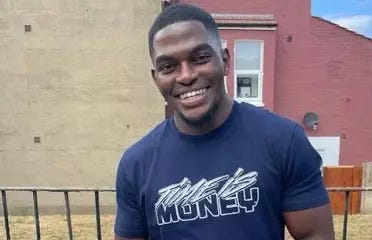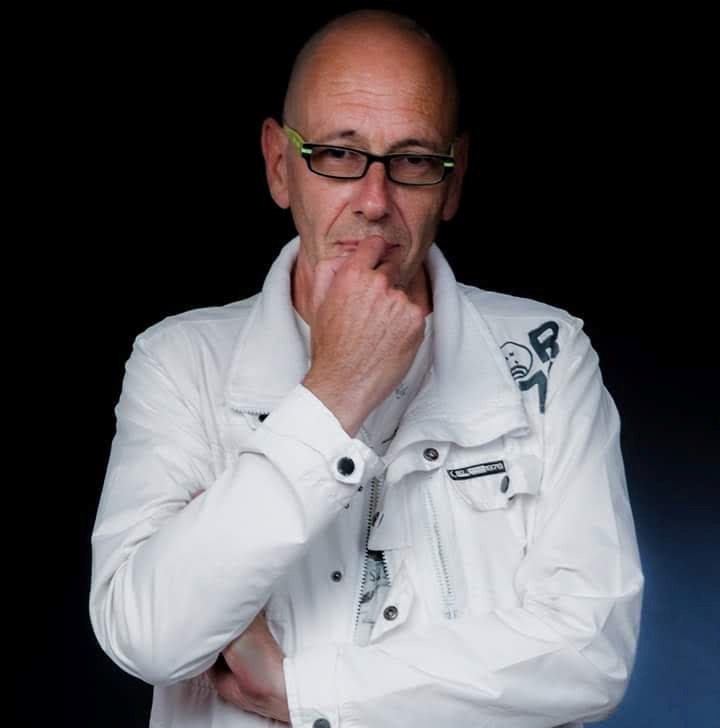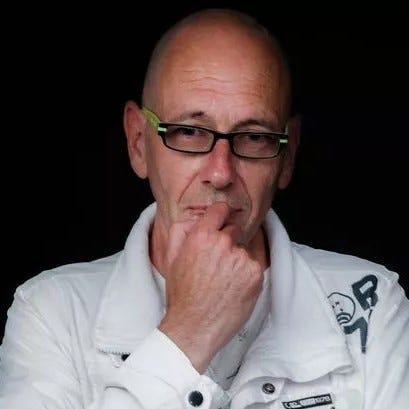#London - The Fragile Ego and the Gangland Illusion: Chris Kaba's Deadly Path.
Did the acquittal settle the matter, or is the continued pursuit of Sgt Blake jeopardising public safety?
I find it difficult to muster any sympathy for Chris Kaba, the 24-year-old shot dead by Metropolitan Police marksman Martyn Blake in September 2022. He was not the "much-loved family man and father-to-be working in construction" initially portrayed; in reality, Kaba was a core member of the notorious Brixton Hill-based ‘67’ collective, considered one of London’s most dangerous street gangs. This revelation starkly contrasts with attempts to paint him as a victim after his death.
The ‘67’ gang, named after the telephone code for their south London neighbourhood, was locked in a violent rivalry with the “17 gang” from nearby Wandsworth Road. Just six days before Kaba’s death, police identified him as the gunman who shot Brandon Malutshi, the brother of a 17-year-old fatally stabbed in 2013. This context of gang violence and retribution underscores the dangerous world Kaba inhabited.
When police, acting on intelligence that the Audi Q8 he was driving had been linked to three previous gun incidents, including a shooting outside a primary school the night before, attempted to stop him, Kaba chose not to cooperate. Bodyworn camera footage revealed at the murder trial that he recklessly tried to escape, reversing into an unmarked police car before Sgt Blake fired the fatal shot through his windscreen. In that moment, facing an imminent threat from a man with a history steeped in violence and driving a vehicle linked to multiple shootings, a police officer made a split-second decision that tragically resulted in Kaba's death. Although unarmed at the time, Kaba had a balaclava and gunshot residue in his possession, suggesting a potential link to the previous night's shooting.
The swift acquittal of Sgt Blake on murder charges by a jury last October, after only a couple of hours of deliberation, speaks volumes. Despite the trial judge's ruling that jurors should not be informed of Kaba’s extensive gang connections and criminal history (six convictions escalating from knife possession at 13 to a four-year sentence for possession of an imitation firearm with intent to cause fear), the jury still found Sgt Blake not guilty. Defence barrister Patrick Gibbs KC even stated that had Kaba not been killed, he would have faced trial for attempted murder for the nightclub shooting days prior.
Now, the Independent Office for Police Conduct (IOPC) is pursuing gross misconduct proceedings against Sergeant Blake, a decision that has sparked outrage amongst his colleagues. One colleague present on the night of the shooting warned LBC that this continued pursuit would inevitably lead to fewer firearms officers on the streets, as officers fear career-ending scrutiny even after a court acquittal. This colleague emphasised that public safety is jeopardised when firearms officers dwindle or hesitate due to fear of protracted investigations, cautioning the IOPC against a potential "witch hunt." Met Commissioner Sir Mark Rowley has also voiced concerns about campaign groups exerting undue influence on legal proceedings, leading to unbalanced outcomes for officers.
Despite evidence presented at a hearing that ‘67’ was considered the "highest harm street gang in Lambeth" involved in numerous serious violent crimes, and a police report concluding they presented a "serious risk of harm," some politicians question whether Sgt Blake would have even been charged with murder if Kaba had been a terrorist. This line of inquiry highlights a perceived double standard and a lack of support for officers dealing with dangerous individuals, regardless of their specific affiliations.
While Kaba’s family, supported by Inquest, understandably expressed their devastation and called for Sgt Blake’s dismissal, their grief does not negate the reality of Kaba’s dangerous lifestyle and his actions leading up to his death. Even his then-pregnant fiancée’s mother, Kim Alleyne, who described him as "loved" and "super-kind," was aware of a domestic violence protection order barring him from contacting her.
Ultimately, this tragic incident underscores the complex and perilous situations faced by law enforcement officers in London. They are tasked with confronting dangerous individuals involved in gang violence, often having to make split-second decisions with potentially fatal consequences. While any loss of life is regrettable, the full context of Chris Kaba’s background and his actions leading up to his death must be considered. He was deeply embedded in a violent gang culture and made a series of choices that ultimately led to the confrontation with armed police. The continued pursuit of Sgt Blake, after a jury acquittal, risks further undermining the morale of officers who bravely put themselves in harm’s way to protect the public from individuals like Kaba.
At their core, the ‘67’ and “17” gangs are manifestations of deep-seated psychological insecurities. These groups, like many others, are often fueled by a collective of fragile egos seeking validation and power within a criminal social structure. The need to belong and feel significant can become twisted, particularly for individuals grappling with a perceived lack of self-worth. Gang membership offers a distorted sense of identity and importance, where violence and territorial control become warped metrics of status and respect – a desperate attempt to project strength to mask underlying inadequacy.
The violent rivalry between ‘67’ and “17,” exemplified by the deaths of Jordan Malutshi and the subsequent shooting of his brother Brandon by Kaba, illustrates this cycle of insecurity and retaliation. Each act of aggression is about asserting a fragile sense of superiority over the perceived "other," a battle waged by insecure egos desperate to feel like they matter.
Kaba’s own trajectory, escalating from petty theft to gun crime, likely reflects this psychological dynamic. His early conviction for knife possession suggests an early immersion in a world where violence was a means of navigating social interactions and potentially compensating for a perceived lack of personal power. Subsequent convictions paint a picture of an individual increasingly entrenched in a lifestyle driven by aggression and a need to project dominance. Even his refusal to cooperate with police after being stabbed at his birthday party speaks to a loyalty to this warped sense of belonging and a fear of appearing weak.
When police attempted to stop Kaba, his decision to evade and then confront officers with the vehicle can be interpreted through this lens of ingrained defensiveness and a refusal to submit to authority, perhaps stemming from a deep-seated insecurity and a learned response to perceived threats. The balaclava and gunshot residue further suggest active involvement in gang violence.
The swift acquittal of Sgt Blake, despite the jury not knowing Kaba’s full criminal background, underscores the perceived reasonableness of the officer's actions in a potentially dangerous situation. Gibbs' assertion that Kaba would have faced trial for attempted murder further highlights the violent context surrounding Kaba in the days leading up to his death.
The IOPC’s pursuit of gross misconduct proceedings has understandably triggered outrage among Sgt Blake’s colleagues, who fear a decline in firearms officers due to unfair penalisation for split-second decisions in volatile situations. This hesitation, born of fear, ultimately undermines public safety.
Sir Mark Rowley’s concerns about the influence of campaign groups on legal proceedings resonate with the idea that the complexities of dealing with individuals entrenched in gang culture, often driven by deep psychological issues, are not fully appreciated. The focus on accountability must be balanced with an understanding of the realities officers face and the psychological factors underpinning the behaviour of those they encounter.
Ultimately, Kaba’s death is a stark reminder of the destructive consequences of unchecked insecurity and the allure of gang membership for those seeking a distorted sense of belonging and power. While his family’s grief is understandable, it cannot erase his involvement in a violent world fueled by fragile egos. The continued scrutiny of Sgt Blake, in this context, risks punishing an officer for confronting the very real dangers posed by individuals deeply enmeshed in this cycle of insecurity and violence.
At the root of this case is ultimately money, operating under the false notion that it is a direct mechanism to power. This is a fundamental illusion, particularly potent within the insecure world of petty gangs. Money and fleeting luxuries do not elevate character or worth. To believe otherwise is a dangerous delusion that, in the context of these fragile-ego-driven gangs, can prove fatal – a profound waste of potential.
The allure of money within these gang structures is not about genuine financial security but a superficial symbol of status and control, a tangible representation of a power these individuals feel they lack internally. Flashy possessions are desperate attempts to mask underlying insecurities and project an image of success and dominance – a transactional form of validation where material wealth is mistakenly equated with personal value and respect.
This illusion fuels the very violence that defines gang life. Competition for income becomes a high-stakes game where life is cheap, and the pursuit of wealth, however illicit, justifies extreme measures. The psychological need to feel powerful, amplified by the false promise of money, creates a self-perpetuating cycle of violence and criminality.
Kaba’s involvement in ‘67’, a gang deeply embedded in drug supply and serious violence, likely saw him entangled in this illusion. The pursuit of money through criminal activities would have been intertwined with his sense of belonging and status. The Audi Q8, linked to gun incidents, could be seen as a symbol of this perceived power. His attempt to evade police in this vehicle, rather than surrender, could be interpreted as a desperate act to protect not just his freedom, but also this carefully constructed image of control.
The tragedy is that this illusion of power through money is fundamentally flawed. True power lies in genuine self-worth, positive contributions, and meaningful relationships – none of which are guaranteed through gang life. The pursuit of material wealth at the expense of human life is the ultimate self-inflicted wound.
Martyn Blake operated in a reality where this illusion had tangible and dangerous consequences, confronting an individual likely motivated, at least in part, by this distorted perception. The subsequent scrutiny he faces highlights the complexities of policing a society where such destructive illusions take hold.
Ultimately, Kaba’s case serves as a tragic illustration of how the false allure of money as power can lead to a life tragically cut short. It underscores the urgent need to address the underlying psychological insecurities driving individuals to gang culture and to dismantle the dangerous illusion that material wealth equates to genuine worth or lasting power – a profound waste of potential sacrificed to a petty and self-destructive delusion.




